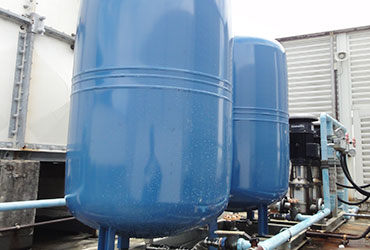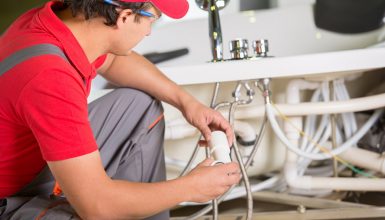We've stumbled on the article involving Low Water Pressure in the House? listed below on the internet and believe it made good sense to talk about it with you on this site.

Low tide pressure in your house can be an aggravating problem, influencing everything from showering to cleaning dishes. If you're experiencing weak water flow, there are several possible reasons and options to check out. In this guide, we'll go over typical factors for low water pressure and functional steps to attend to the concern successfully.
Introduction to Low Tide Stress
Low tide pressure happens when the flow of water from your taps, showers, and other components is weaker than common. This can make everyday tasks much more challenging and less reliable. Comprehending the reasons for low tide pressure is critical to discovering the right option.
Usual Root Causes Of Low Tide Stress
Faulty Stress Regulators
Stress regulatory authorities are accountable for preserving regular water pressure in your house. If they malfunction, it can lead to low water pressure or irregular circulation throughout your home.
Community Water Supply Issues
Often, the trouble lies outside your home. Metropolitan water supply problems, such as main line leaks or maintenance work, can briefly minimize water pressure in your area.
Pipeline Obstructions
Over time, pipes can come to be obstructed with mineral deposits, sediment, or debris, restricting the circulation of water. This is a typical issue in older homes with galvanized steel pipelines.
Rust
Rust within pipelines can lead to leaks and lowered water pressure. Corrosion accumulation can tighten water flow, particularly in maturing plumbing systems.
Exactly How to Detect Low Tide Stress
Examining Pipes
Evaluate noticeable pipelines for indicators of leakages, corrosion, or blockages. Focus on any type of unusual sounds, such as banging or rattling pipelines, which can show problems within the plumbing system.
Consulting with a Plumber
If you're unable to determine the source of low tide pressure, consider hiring a specialist plumber to conduct a comprehensive inspection. They can identify underlying concerns and advise suitable solutions.
Checking Taps and Fixtures
Start by checking the water stress at various faucets and components throughout your home. If the concern is separated to details areas, it might indicate localized problems.
Do It Yourself Solutions to Repair Low Water Pressure
Flushing Hot Water Heater
Sediment accumulation in the water heater can limit circulation and reduce efficiency. Flushing the container periodically assists get rid of debris and maintain optimal efficiency.
Examining Pressure Regulatory Authority
Make sure that the stress regulator is functioning correctly. Adjusting or changing the regulatory authority can aid recover correct water stress throughout your home.
Cleaning Up Aerators and Showerheads
Mineral deposits can accumulate in aerators and showerheads, reducing water circulation. Get rid of and clean these parts regularly to boost water stress.
Clearing Clogs in Piping
For minor clogs, attempt making use of a plumbing snake or chemical drainpipe cleaner to clear obstructions in pipelines. Be cautious when utilizing chemicals and adhere to safety and security guidelines.
When to Call a Professional Plumber
If do it yourself efforts fall short to deal with the concern or if you think substantial plumbing troubles, it's best to seek help from a certified plumber. They have the knowledge and devices to resolve complex concerns safely and efficiently.
Safety Nets to Preserve Water Stress
Mounting a Stress Booster
Take into consideration installing a pressure booster pump to enhance water stress in locations with continually reduced circulation. This can be specifically helpful for multi-story homes or residential or commercial properties with high-demand fixtures.
Tracking Water Usage
Bear in mind water use practices and avoid ill-using the plumbing system. Basic changes, such as astonishing showers and washing tons, can help preserve adequate water stress.
Regular Upkeep
Schedule regular upkeep for your plumbing system to prevent problems such as corrosion, leaks, and obstructions. Dealing with small problems early can assist stay clear of more substantial repair work later.
Verdict
Handling low tide stress can be aggravating, however recognizing the underlying reasons and executing ideal services can bring back optimum circulation throughout your home. Whether it's cleaning up aerators, checking pipelines, or speaking with a plumber, taking proactive steps can ensure a constant supply of water for your day-to-day demands.
FOUR WAYS TO FIX LOW WATER PRESSURE NOW
Turning on a shower or faucet only to find the water comes out in a sad, slow drizzle is never a good feeling. How exactly are you supposed to wash a pan or take a quick shower when it takes 10 minutes just to rinse off a little soap? The good news is that when your water pressure is bad, there's always a cause: typically one that can be easily fixed. Here are some of the most common causes of low pressure and what you can do to fix the issue:
DEBRIS AND MINERAL DEPOSIT BUILDUPS
If you notice low water pressure from just one or two of the fixtures in your house, the problem likely has to do with debris buildup. Water is full of minerals and other debris, all of which can accumulate in your pipes and on your fixtures. This can cause a blockage that affects how much water flows through. To fix this, try filling a small plastic bag with white vinegar, and use a rubber band to hang it around your showerhead or faucet. Let the head of the fixture soak for a few hours, and the vinegar should loosen the deposits.
WATER LEAKS
Leaks are another common cause of low water pressure. If water is flowing out of your plumbing through a hole or crack before it can reach your fixture, the pressure coming out of the faucet or showerhead will be lower. A plumbing professional is your best bet for finding and repairing a leak in your water supply pipes.
Leaks are another common cause of low water pressure. If water is flowing out of your plumbing through a hole or crack before it can reach your fixture, the pressure coming out of the faucet or showerhead will be lower. A plumbing professional is your best bet for finding and repairing a leak in your water supply pipes.
A VALVE ISSUE
If you have low water pressure throughout your home, check your main shut-off valve to make sure it's completely open. You may also want to see if there's a pressure-reducing valve installed. If there is, have a plumber help you adjust the settings to get the pressure you're looking for.
OTHERS USING WATER
Believe it or not, your low water pressure could be caused by your neighbors. If you notice low pressure at certain times of day, it may be because you and the people living next to you have similar schedules - when everyone is showering at the same time, the pressure will be lower in every home. Low pressure throughout the neighborhood may also be caused by an issue with your municipal water supply. If that's the case, call the supplier to see if they're working on the issue.
https://www.rotorooter.com/blog/water-leaking/low-water-pressure-fixes/

I found that piece about 9 Reasons for Low Water Pressure in Your House when doing a search on the search engines. Make sure you take a moment to distribute this blog if you liked it. Kudos for being here. Don't hesitate to check up our site back soon.
Contact Us